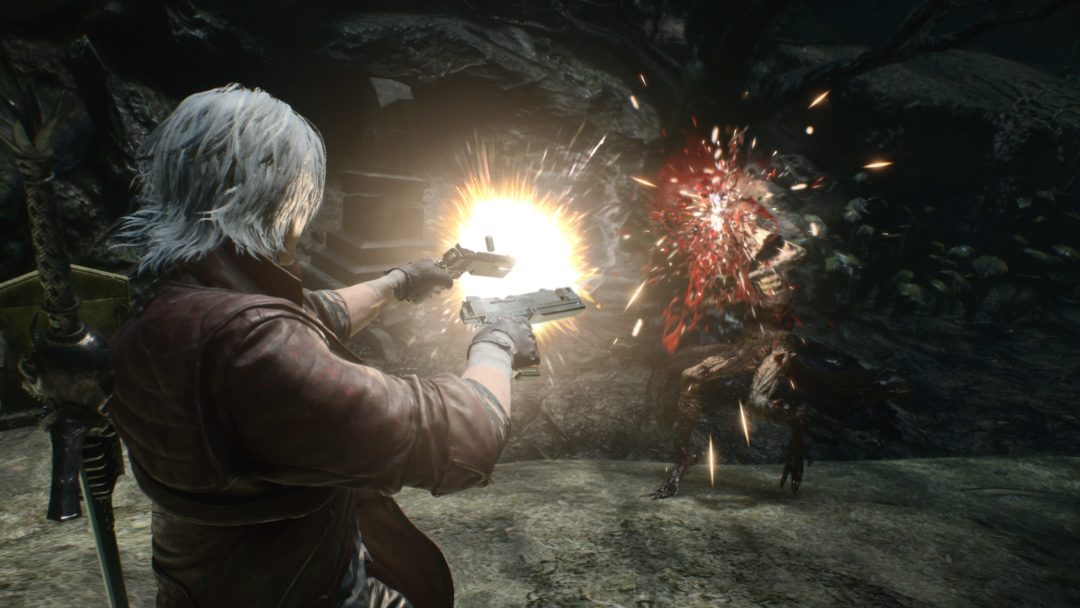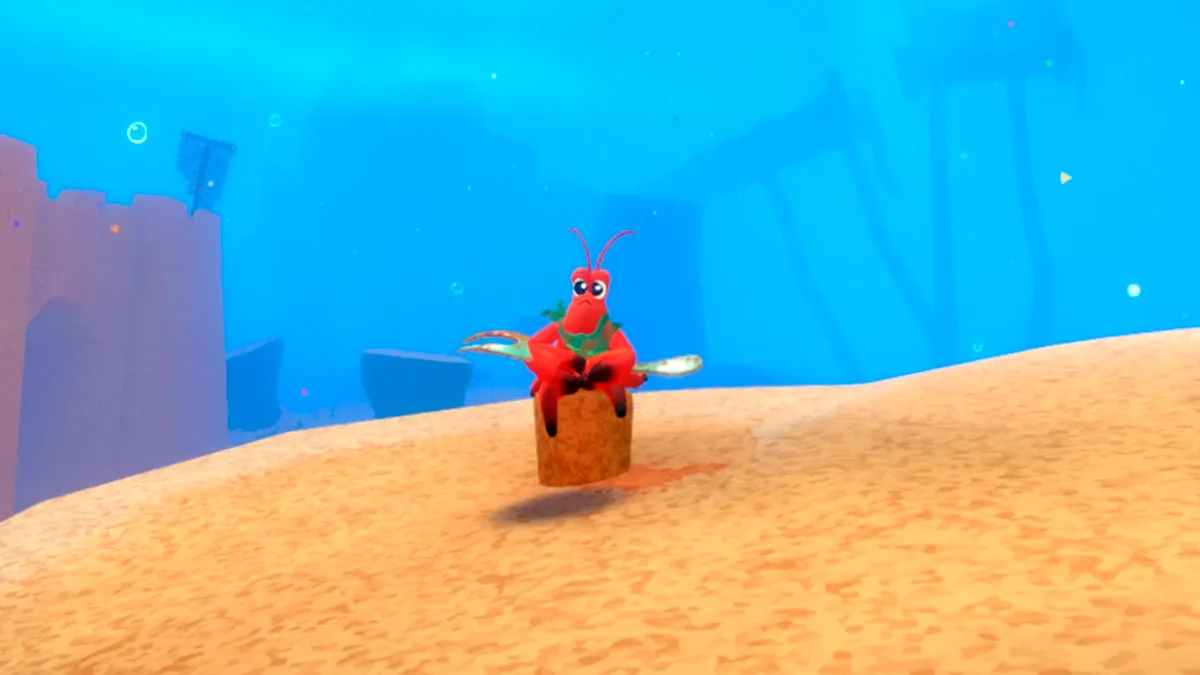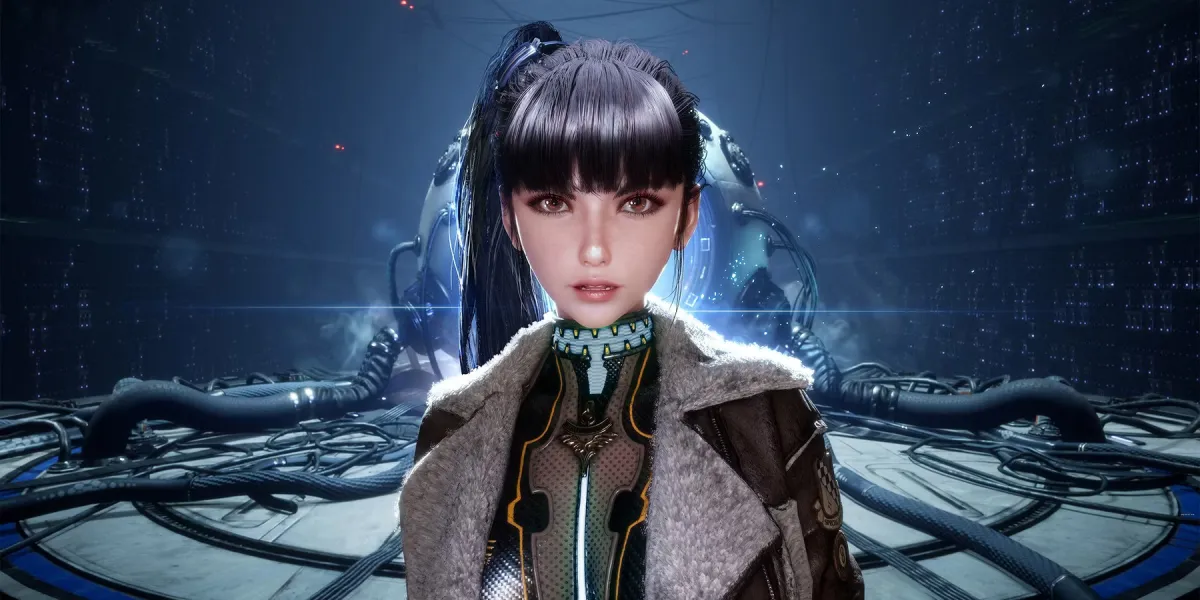Devil May Cry 5 is 99 percent about doing things that are totally sweet and looking totally sweet while doing them. There’s no thematic depth waiting beneath its bombastic, blood-drenched glamour and its vulcanizing, improvisational violence choreography. But when Hideaki Itsuno’s unlikely sequel drew me into a meditative flow of stabbing angry skeletons with a sword the height and width of a Bob’s Big Boy statue, I still found myself carried back to electric moments and powerful memories.
Playing Devil May Cry 5, I vividly remembered the moment I got rock and roll. Sitting beside a Marriott hotel pool so chlorinated it should have bleached every splashing kid’s hair as white as DMC hero Dante’s, 9-year-old me listened to Alice Cooper’s album Hey Stoopid for the first time. Unconcerned with the cred loss of enjoying Cooper, drunk on birthday cake and friendship, I broke through the rock veil: This is so stupid. The posturing, bigness, lyrics, and cheese; all of it. Yet rock and roll is awesome, cathartic and profound. My brain was restructured by the zen koan that is rock music, reconciling the irreconcilable conflict between something being groundbreakingly dumb yet rad as hell. Devil May Cry 5 penetrated those old sulci with its luscious combination of action, suppurating art, and brute melodrama. Devil May Cry 5 is stupid and awesome. Devil May Cry 5 is rock and roll.
Choosing a single moment from the game to illustrate its essential rockness is impossible. Over the course of 20 missions spread out over a dozen hours, Devil May Cry 5 pummels you with scenes and activities walking between idiocy and righteousness with the precision of French high-wire walker Philippe Petit. This is one of the most expertly paced action games I’ve played in years, never outstaying its welcome or leaving you keening for more. The game opens with its heroic motley crew (née Crüe) already defeated at the hands of some swirly, building-sized freak converting a lovely human city into a Babelian demon tower that’s part evil poppy flower and part monster insect hive. Original Devil May Cry hero Dante, his would-be monster hunting rhythm section Trish and Lady, his one-armed protege Nero, and gothy newcomer V (who literally whips out a volume of poetry in fights), are flat out trounced by the strange big bad called Urizen. Even turning into a massive demon himself, the action game equivalent of the bitchin’ solo, doesn’t help Dante win the fight. Nero is dragged out of the arena screaming, forced to abandon his friends.

What would typically be the encore is where Devil May Cry 5 starts. The series is on a come back tour 11 years after its last numbered entry and 6 years from a divisive (but spectacular) spinoff, and the game is all killer, no filler. The game ebbs only for quiet breathers in stages with platforming, featherweight exploration hunting for health or special move expansions, and deeply charismatic dialogue scenes between its few characters. As with Resident Evil 7: Biohazard and the Resident Evil 2 remake, Capcom continues its streak of stories that retain the company’s dopey manga excess while also delivering performances and dialogue that sounds like actual words real humans would say.
Even the supporting cast makes basic moments big fun. Nico, the Devil May Cry crew’s weapon smith, stands out as a cross between Loretta Lynn and a The A-Team’s Hannibal Smith, all countrified militaristic bluster and one-liners. She’s who you talk to when you want to spend all those points earned wandering demonified city streets and stringing together special moves in the game’s relentless series of one-versus-the-mob fights. But every time she appears to dole out a new robot hand to Nero or juice up the supernatural critters V uses for weapons, she arrives by crashing a seemingly indestructible conversion van out of the sky, lit cigarette akimbo beneath her Lisa Loeb glasses, a mellow groove coming out of the vintage jukebox in the van’s mobile workshop. I laughed and clapped every single time she showed up. Cred be damned; Devil May Cry 5’s eagerness to be silly is boss.
Cred be damned; Devil May Cry 5’s eagerness to be silly is boss.
Those smoldering weapons and long coat-wearing dudes wielding them are the true stars of the show, however. Director Itsuno inherited the Devil May Cry series from creator Hideki Kamiya, who went on to create faster and more flowing action games like Bayonetta and The Wonderful 101. With Devil May Cry 3 and 4, Itsuno stayed committed to the more rigid, staccato action of the series’ original, which was made all the way back in the earliest days of the PlayStation 2, while also trying to create opportunities for more experimentation and a greater variety of playable characters beyond Dante. His experiments were always likable, but mixed in their execution. Devil May Cry 3 was brilliant, but its flair for technical combat kept most people out. Devil May Cry 4’s attempt to lower the barrier of entry with new characters and even more play styles left the game feeling bloated and meandering.

Devil May Cry 5 is the platonic ideal of Itsuno’s vision and a perfect entryway into a storied video game series that might seem forbiddingly archaic to folks who’ve never tried it. Following a classically linear model, the game bounces between Nero, Dante, and V as the story unfolds, occasionally letting you pick who you’d like to take into a given stage but more often restricting you to just one. All three characters have distinct styles. Nero has just his sword, a pistol, and a panoply of robotic hands that can let him do everything from freezing time to surfing on a heat-seeking, rocket-propelled metal fist. Dante has the greatest variety of tools, a Neil Peart of death letting who can cycle between a big sword or gauntlets literally made of flaming rock, each one modifiable by four different combat stances. And then there’s V. Looking like Adam Driver cosplaying as Criss Angel, he’s more fragile than both and has to stay at a distance while using animal companions to attack enemies.

No matter who you’re using, Devil May Cry 5 always feels great and never strays from that rock spirit. At the start of one fight, the boss throws a motorcycle at Dante who cuts it in half with his sword. After slicing on that boss repeatedly, pieces of the boss’ body fuse to the motorcycle, mending and transforming it into a demon motorcycle. Then you can use the motorcycle as a melee weapon where each fist is half of a motorized death bike. V can unlock a skill where the demon puma that serves as his proxy melee weapon turns into a hoverboard made of shadows so he can move around the environment faster. The cycle of flitting between each character and experimenting with new skills to see how you can improve your stylishness in each encounter never becomes rote. Right when Devil May Cry 5 edges up to drawing out a setting too long, it switches things up, doling out another sight as idiotic as it is ace.
Only series diehards are likely to notice the game’s flaws or consider them as such. The rumbling, consistent pacing of stages and story sacrifices the singular environments of older games. In Devil May Cry 3, you could wander far back to previous areas and hunt for secret items and grind out experience points. This game locks you into its stages, and beasties don’t respawn. Points for improving skills are handed out much more liberally than they were in the past and the game doesn’t put up much of a fight on its normal difficulty setting. For better or worse, Devil May Cry 5 is a crowd pleaser first, letting you march all over the bones of its enemies with extreme style. But it’s also the precise right length to encourage replaying the game multiple times so masochists and perfectionists can push themselves against a rougher version of the campaign. The game also completely abandons the fascinating world-building and aesthetically rich dimension shifting of Ninja Theory’s spinoff DmC: Devil May Cry which is a shame.
Rock and roll is saddled with an unfortunate tradition that doesn’t seem to plague creators working in other mediums. An artist creates a seminal, beloved debut and then almost every single album that follows that virgin high is hung with the expectation of being a “return to form” or a “return to the band’s roots.” Call it the Pearl Jam rule, that unfairness unique to rock that dismisses the accomplishments and distinctive soul of the savory work that follows. By dint of having a number in its title Devil May Cry 5 is inevitably part of a creative continuity even if its narrative is so slight but satisfying that this could comfortably be anyone’s first outing. It will be compared to the original or to Itsuno’s beloved Devil May Cry 3, and it will be called a return to form. But couching it in its own internal history is a disservice to how hard Devil May Cry 5 rocks on its own. Turn this game on, witness something as stupid and glorious as a one-armed man revving the combustion engine built into his sword as he backflips off a ghost holding giant scissors, and shout at the devil.
This game was reviewed on Xbox One using code provided by the publisher.





